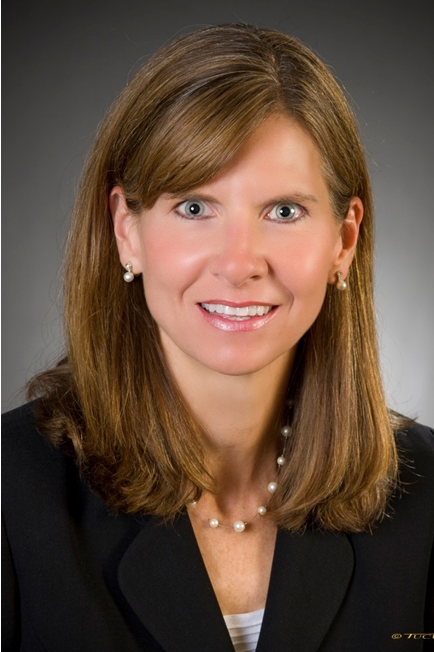HUD Prepared Remarks on Future of Housing After the Crisis
On January 22, the U.S. Department of Housing and Urban Development (HUD) released remarks of HUD Secretary Shaun Donovan, as prepared for delivery.
Remarks of Secretary Shaun Donovan at Congressman Denny Heck’s Conference: “The Future of Housing After the Crisis”
As prepared for delivery
Thank you very much, Congressman Heck, for that generous introduction. And thank you for your contributions to the 10th District and the entire nation.
In particular, I appreciate your leadership with the HECM bill, allowing HUD to make important reforms to this program, while continuing to help seniors age in place with comfort and dignity.
And I am deeply grateful that you invited me to be here today.
I always love coming to Washington, and during this visit, there is a special excitement in the air.
Now, I am under no illusion that it’s because the HUD Secretary is here. I know that all this joy is because the Seahawks are going to the Super Bowl.
To all you fans, congratulations on this milestone accomplishment. They made quite a comeback against the 49ers on Sunday. So I can’t think of a better place to talk about the housing market’s comeback and future than right here in Washington.
The Progress We’ve Made
It’s an important discussion to have because homes are the foundation of our lives and where we raise our families. Homes are at the center of healthy and thriving communities.
Owning a home helps families build wealth, start businesses and put their kids through college.
In short, home is critical to every aspect of our lives which is why we’ve got to ensure our housing market is healthy and provides opportunity to all responsible families.
Now, of course, this work hasn’t been easy in recent times. Just a few years ago, our nation endured a once-in-a-lifetime crisis that devastated Americans across the nation. When President Obama took office in 2009, the housing market was in free-fall.
Home prices had fallen nearly 20 percent from the year before – the largest one-year drop ever measured. Roughly three million borrowers were seriously delinquent. Construction projects and plans came to a halt, causing the industry to lose 100,000 jobs a month.
And of course, these drops represented more than shifting numbers on a spreadsheet. They represented people’s lives, savings and struggles. So as soon as the President and I took office, we took action to stabilize the market and help those in need.
We helped nearly 8 million families modify their mortgages. We allocated $7 billion to communities in all 50 states through our Neighborhood Stabilization Program to address foreclosed and abandoned properties. And during the most trying times, the Federal Housing Administration stepped up to keep capital flowing and stabilize the market.
As a result of these and other efforts, the market is healing. From the beginning of 2012 to the third quarter of last year, the number of underwater borrowers fell by nearly half, lifting 5.7 million homeowners above water. During that same period, homeowners have seen $3.4 trillion in home equity restored. And, home prices continue to rise.
Bottom line: progress is happening. But as all of us know, there is still more work to do.
Access to credit for responsible families is still too limited. Underwater borrowers are still too common.
That’s why the Administration is committed to accelerating the housing market recovery in a number of ways.
Accelerating Our Progress
First, we are empowering families with the tools they need to succeed in today’s housing market.
I don’t have to tell you that housing can be a complex and overwhelming source of frustration for families.
As we all know, a significant cause of the crisis was that many buyers simply didn’t know what they were getting into. That’s why, in the last four years, HUD-approved housing counselors have worked with more than nine million families, both in the pre-purchase and post-purchase phases.
By giving borrowers access to reliable and unbiased information, they will make better decisions and the entire market will benefit.
Another focus of ours is making it easier for single-family lenders to get quality products to those ready to buy. Right now, one of the major obstacles blocking a full housing recovery is regulatory uncertainty.
And I understand. The federal government has taken a lot of steps that were, in my view, necessary to restore confidence. But one of the outcomes was that, too often, the rules of the road weren’t clear enough and that led to a tightening of credit.
According to the Federal Reserve, from 2007 to 2012, mortgage lending to borrowers with credit scores over 780 fell by a third. Loans to those with scores between 620 and 680 fell 90%.
So my colleagues and I have been working with a wide-variety of stakeholders, including many of you, to simplify things moving forward. Case in point is the qualified residential mortgage rule, which we finalized last month.
It’s the result of six federal agencies, including HUD, coming together to make QRM equal to QM in order to simplify the mortgage origination process. This is a direct result of the feedback we’ve received since the first proposal in 2011.
Now our rule avoids greater complexity, and overly restrictive down payment requirements that could serve only to exclude creditworthy borrowers. Some of our critics have called this a dilution of our rule. But as you know, the Consumer Financial Protection Bureau’s QM rule itself is a very strong measure. And we are confident that this will find the right balance between responsibility and opportunity moving forward.
I thank you for your engagement on this issue. We very much look forward to continuing to listen to stakeholders like you so we get these conditions right for the single-family market.
We are also committed to doing the same with the multi-family community. I’ve made it a priority to make it easier to do business with HUD so that we can put an end to unnecessary delays on the ground.
Case in point is our Low Income Housing Tax Credit Pilot Program. As you all know, in the past, investors using the Low Income Housing Tax Credit who wanted to access FHA financing had to follow an approval process that sometimes took a year or more.
Not only did that stall important affordable housing projects, it scared off other potential partners from trying in the first place. To address this challenge, we launched the pilot program last year and are seeing tremendous results.
Deals are taking an average of only 86 days from receipt of the complete application to closing.
And we are proud to be seeing these kinds of gains in a number of our initiatives. That’s why we’re committed to expanding this work with efforts like the transformation of our Multifamily Housing Office.
To compliment this work, the Administration continues to fight for the Low-Income Housing Tax Credit. All of us here know how important the LIHTC has been in generating multi-family activity.
That’s why the President and I have championed it time and again, most recently, calling on Congress to continue to support this tool as part of his housing plan announced last August.
And I urge you to continue to do the same by letting Congress know that not only do we need to keep the LIHTC, we need to expand it in order to better address the needs out there and provide more flexibility for the credit.
Together, all these steps will go a long way in accelerating our housing market’s growth.
And we want to make sure that this housing succeeds by working with public and private partners to improve surrounding community assets.
No housing can thrive if its residents don’t have access to things like good jobs, quality schools and reliable transit options. That’s why the Obama Administration has joined with local leaders to take a comprehensive approach to development.
At the community level, HUD launched the Choice Neighborhoods initiative, a competitive program that gives local leaders the flexibility to transform their neighborhoods in their own unique way.
Building off the HOPE VI public housing revitalization program, Choice expands the activities that resources can be targeted towards to include not just all forms of housing, but also neighborhood amenities.
This work is making a profound difference in communities like Yesler Terrace. In 2011, Seattle was one of the first five cities to be awarded Choice Neighborhoods implementation grant dollars – in total, receiving nearly $30 million.
Yesterday, I had the chance to visit Yesler Terrace and see up close the profound changes underway. The Housing Authority is overseeing the development of thousands of new, mixed-development homes. Seattle University is providing educational support services to help young people.
And a wide-variety of partners are coming together to link the community with surrounding neighborhoods by creating paths for pedestrians to connect with the Little Saigon business district located just down the hill from Yesler Terrace …as well as to maximize the impact of the new street car rail line that will run through the neighborhood, better connecting residents to downtown and the medical district.
In total, the partnerships created through Choice Neighborhoods are driving change and expanding opportunity. And at a time of tough budget choices, grantees are leveraging $8 for every $1 Choice Neighborhood brings, generating incredible outcomes at the community level.
At the regional level, the Partnership for Sustainable Communities is doing the same.
HUD has joined with the Department of Transportation, the Environmental Protection Agency and the U.S. Department of Agriculture to make entire regions more economically competitive.
The 143 planning grants we have awarded include 5 grantees from the state of Washington – representing an investment of nearly $12 million.
One example is Puget Sound Regional Council’s “Growing Transit Communities” plan to locate housing, jobs and services close to transit options so that everyone has access to opportunity.
Another example is Thurston County which has an ambitious plan to revitalize the Capitol-Martin Corridor.
In total, our grants are touching and improving the lives of nearly half the U.S. population in a number of profound and innovative ways. This kind of work is ensuring that communities have all the support they need to grow.
But we can’t be satisfied by these results. After all, if the housing market were to collapse again, it would undermine all these efforts.
That is why we’ve got to ensure that a crisis of the magnitude we just saw never happens again by reforming our housing finance system.
Please click here to view the remarks in their entirety.
About Safeguard
Safeguard Properties is the largest mortgage field services company in the U.S. Founded in 1990 by Robert Klein and based in Valley View, Ohio, the company inspects and maintains defaulted and foreclosed properties for mortgage servicers, lenders, and other financial institutions. Safeguard employs approximately 1,700 people, in addition to a network of thousands of contractors nationally. Website: www.safeguardproperties.com.





